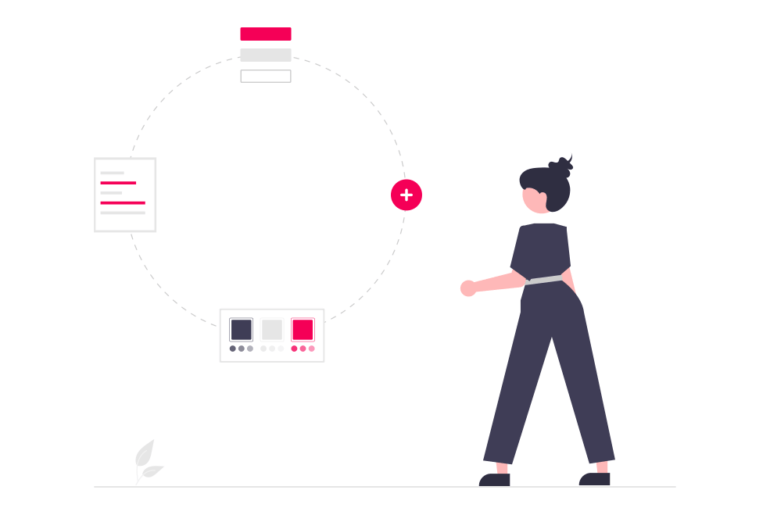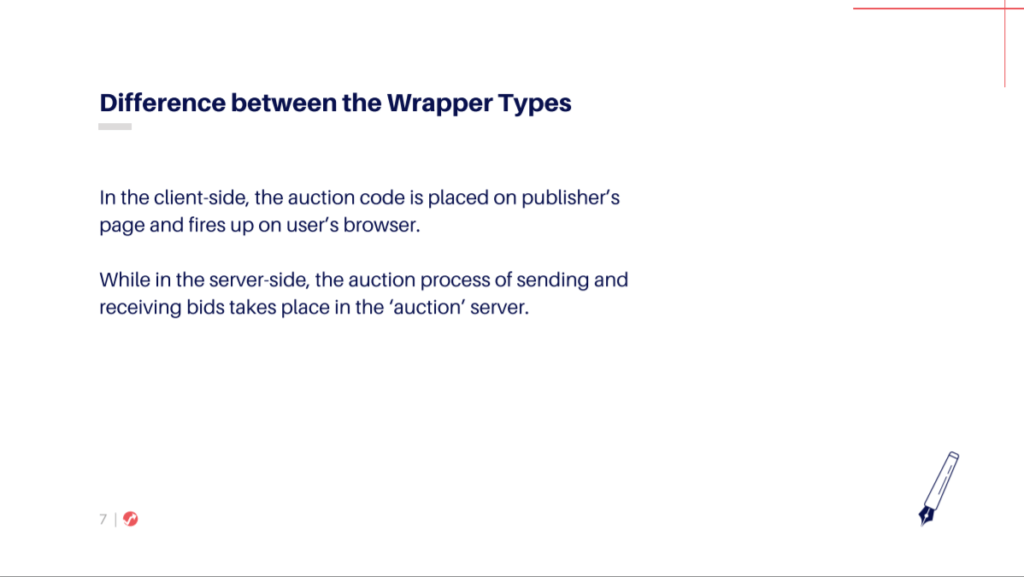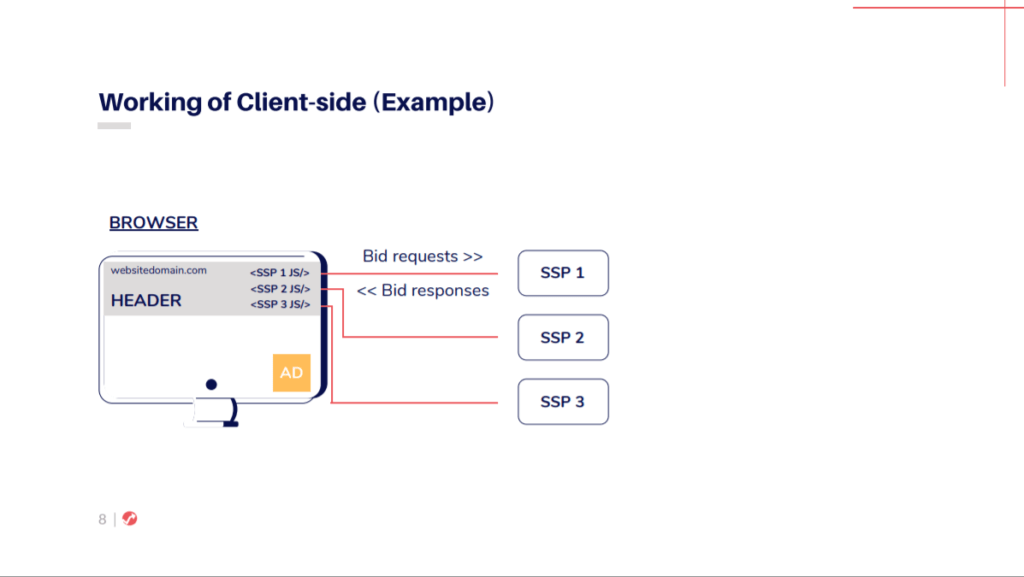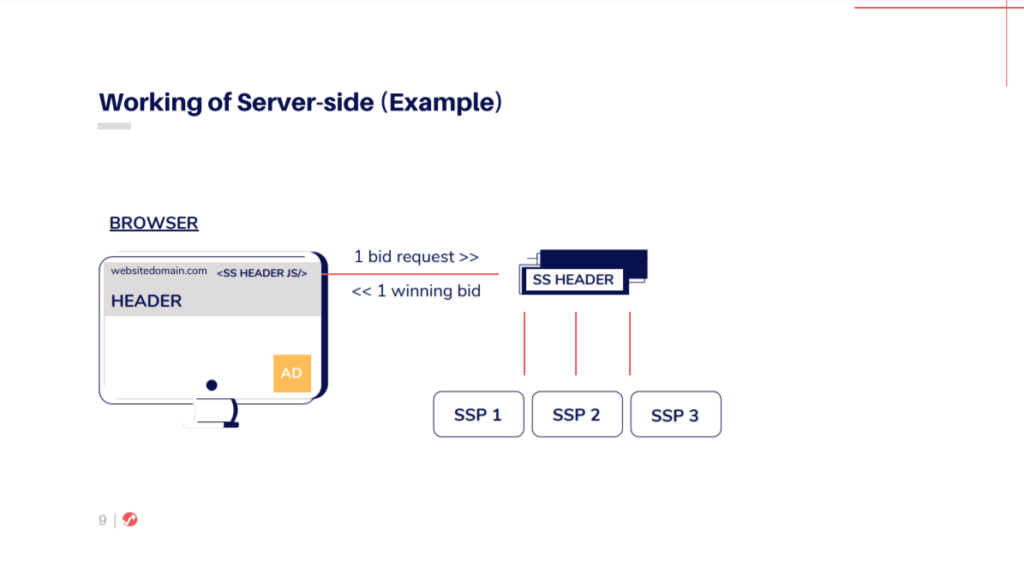Still, trying to figure out what is Header Bidding Wrapper? You’re not alone. Check out this article to learn everything you need to know about header bidding wrappers and how they work.
We have already written about header bidding in our earlier blogs. It’s a technology that enables publishers to offer their inventory to multiple ad exchanges. But we haven’t discussed the header bidding wrappers yet—an essential part of the process. First, let’s have a quick recap.
Header bidding allows publishers to increase their ad revenue by creating bid pressure for the ad inventory. Publishers also get better access to ad transaction data, as opposed to many other black box programmatic implementations.
Of course, this is all good news. But header bidding is also known to increase page load times and ad latency if not optimally configured.
That’s where header bidding wrappers come in! In this post, we’ll discuss what header bidding wrappers are, how they work, and their pros and cons.
What is a Header Bidding Wrapper?
A header bidding wrapper is a Javascript tag that resides on the publisher’s webpage and makes asynchronous calls to demand partners. A wrapper is essentially used to organize multiple demand partners and set the rules for running the auction.
Using a wrapper ensures that all demand partners have their bid requests triggered at the same time. In addition, the wrapper enforces timeout settings, i.e., how long the browser will wait for bidders to respond. In short, wrappers streamline the implementation of header bidding.
Without a wrapper, every time you make a change to a header tag, your ad ops team has to manually replace the old header tag with a new one. But if you have a wrapper that provides you with a portal where you can place that code one time ad make sure it works, you can work in a separate interface to change code. This ensures that you are not messing with the actual page anymore.
Jay Friedman, COO of programmatic company Goodway Group
Basis their function, header bidding wrappers can be client-side, server-side, or hybrid. And depending on who built it, they can be open-source, paid, self-serve, and managed.
Also Read – Client-side vs. Server-side Header Bidding: What to Choose?
How Do Header Bidding Wrappers Work?
As we’ve explained, wrappers exist to make header bidding implementation easier for publishers. With a wrapper, instead of adding and managing the code for each demand partner individually, a publisher can just add or drop demand partners from the wrapper as needed.
Wrappers can also contain ad tag codes for services such as tracking, analytics, and viewability that are to be run on publisher pages. Though their primary function is generating bid requests, collecting bids, and communicating them to the ad server.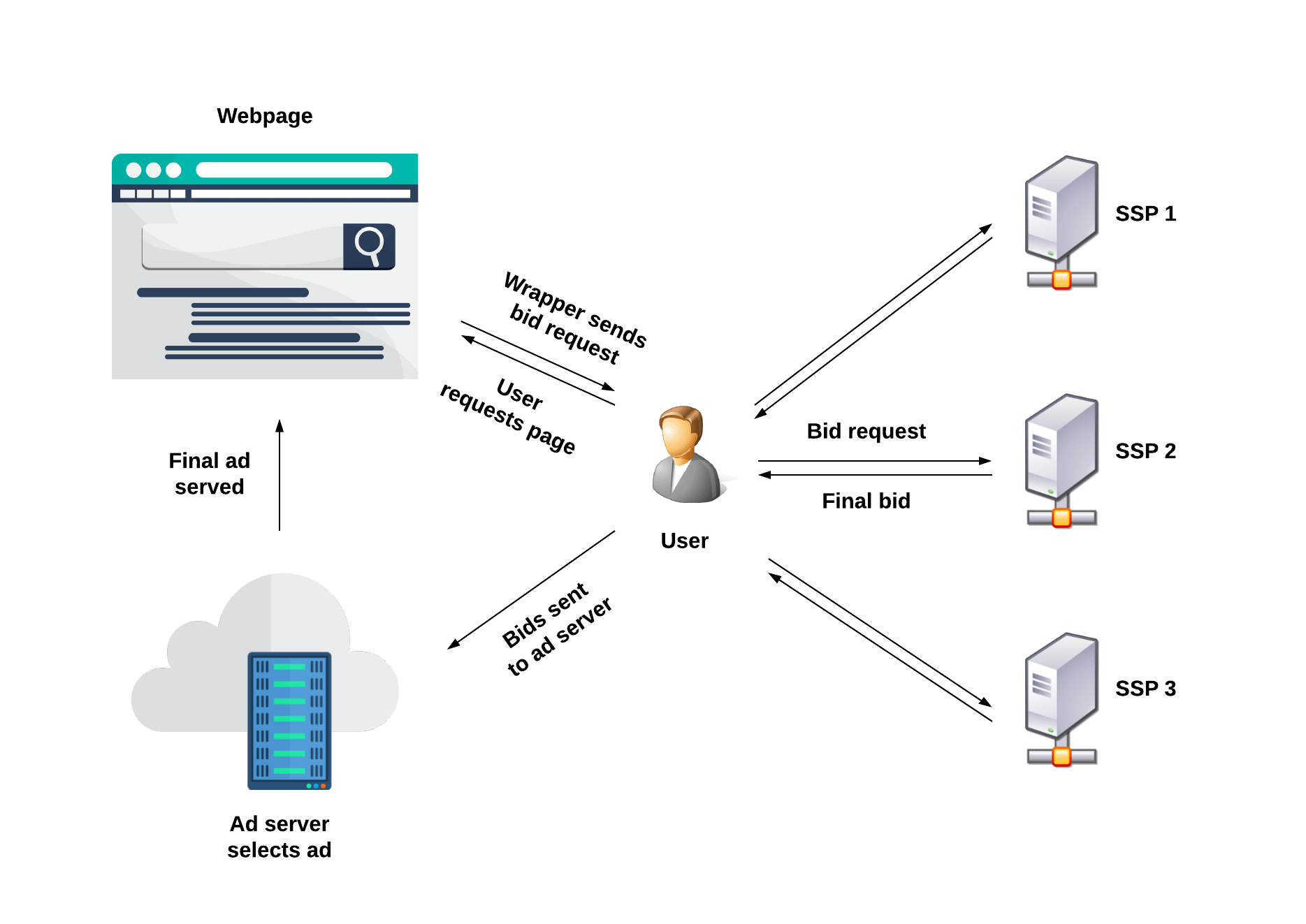
Generally speaking, these are the steps involved in how that process works:
- The user requests the webpage
- Demand partners respond with their bids
- Wrapper sends the collected bids to an ad server (such as Google Ad Manager)
- The ad server makes its final decision and serves the ad
If you are familiar with tag management software, you can think about wrappers as tag management tools for managing demand sources. While using a wrapper is not mandatory for setting up header bidding, it makes easy work of working with multiple demand partners and simplifies communication with the ad server.
We also hosted a webinar where Types of Header Bidding Wrappers were thoroughly discussed:
What are The Types of Header Bidding Wrappers?
There are two primary benefits of using a wrapper: maximizing revenue through a fair auction and reducing latency by optimizing each exchange adapter.
Coming back to the wrapper types, there are three types of header bidding wrappers. Open-source, proprietary, and managed wrapper solutions. Let’s take a closer look at each of them.
1. Open-source Header Bidding Wrapper
As the name suggests itself, an open-source header bidding wrapper is what it exactly sounds like. It’s a free and open-source solution, which is being used widely among publishers.
The open-source nature of this header bidding wrapper means that the code can be accessed by anyone. Since the source code will be opened to the community, there is more transparency as it can be accessed by them to ensure a fair auction.
This provides greater flexibility and customization to publishers who implements header bidding on their websites. Not to mention, it’s also a cost-effective approach for publishers.
The most commonly used free and open-source solutions among ad tech professionals are PreBid and PubFood.
2. Proprietary Wrapper Solution
As opposed to open-source, proprietary solutions have to work with individual exchanges. It is because it requires constant re-certification. This re-certification places a significant burden on the development resources of the wrapper provider, leading to longer development cycles and more downtime.
As a result, the process of maintaining compatibility with multiple exchanges can be time-consuming and resource-intensive.
Moreover, many publishers choose not to go with the proprietary wrapper solutions for a number of reasons. One of them is less transparency.
Another reason is that proprietary wrappers may be more expensive than open-source alternatives, which can be a significant factor for publishers who are operating on a tight budget.
3. Managed Wrapper Solutions
Publishers who are not well-versed with the technical resources as well as SSP partnerships and ad operations resources might want to opt for the managed wrapper solutions.
One of the best things about managed solutions is that Prebid is frequently built on top of them, offering you complete transparency and, depending on the supplier, additional benefits. Some of the providers might, for instance, provide a uniform dashboard or additional ad packages.
In addition to offering devoted account managers, implementation support, and ad operations engineers, managed wrapper solutions significantly lessen the burden of development for publishers.
Managed wrapper solutions not only provide dedicated account managers, implementation support, and ad ops engineers, but they also reduce the development complexity for publishers.
This makes it easier for publishers to focus on producing quality content without having to worry about the technical aspects of ad operations.
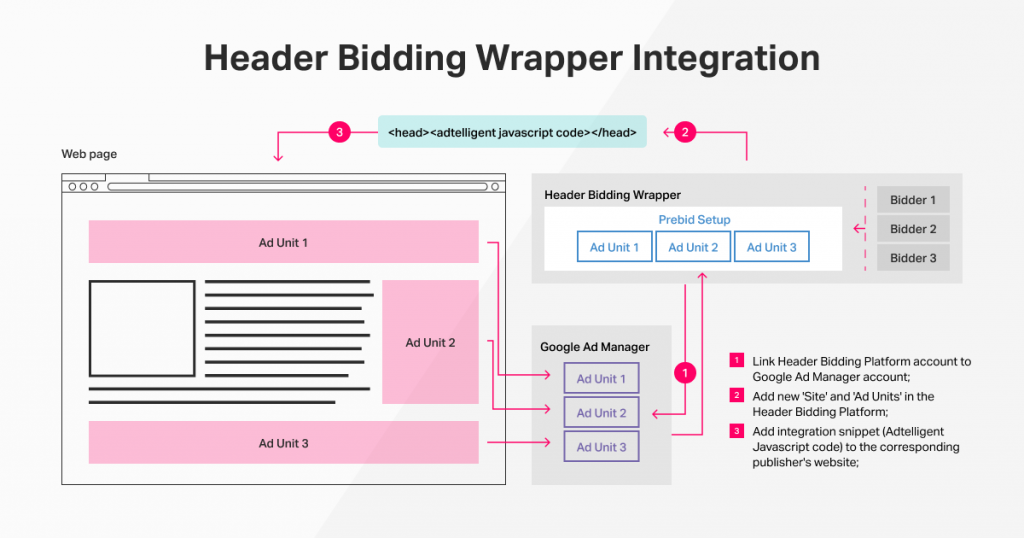
Advantages of Header Bidding Wrappers
As vital as header bidding is for revenue optimization, setting it up can be a complicated undertaking, and yes—if not done well, it can increase latency. Header bidding wrappers were created to take care of at least a few of these challenges.
Optimal timeouts
Some header bidding demand partners allow you to set timeouts, while others don’t. But if you place every partner’s code into a wrapper, you can set a central timeout that will cut off bids from any partner that is too slow to respond.
It’s also easier to manage timeouts from one place, with a wrapper than setting it manually with each demand partner.
Asynchronous code
Since wrappers support asynchronous code, all the bid requests are sent to demand partners simultaneously as soon as the webpage is requested by the user.
In the case of synchronous code, a tag would be fired only after the previous one has finished executing. While the auction is still limited by the slowest partner, there is queueing associated delay.
Demand management
Having a wrapper makes it easier to add or remove demand partners. Have a demand partner who consistently slows down the auction?
Just drop them from the wrapper. It simplifies work for your ad operations team by giving them a central container to work with instead of having to manage a patchwork of code from multiple demand sources.
Also Read – How to Improve Your Header Bidding Performance? – AdPushup
Disadvantages of Header Bidding Wrappers
As you can see, there are a lot of advantages to using a wrapper. The advantages far outweigh its downsides, still, you should be aware of the downsides before you decide to get one.
Complex setup
It may take considerable time and effort to understand how the wrapper works, what it supports, and what it doesn’t during the initial setup.
So if you’re just testing header bidding or plan to work with only one demand partner, by all means, give it a miss.
However, if you’re serious and want to maximize revenue by working with multiple demand partners, setting up a wrapper is a long-term investment that will save you much more time and effort later.
Partner stickiness
There are multiple vendors that offer header bidding wrappers now including Prebid, Yieldbot, Index Exchange, OpenX, bRealTime, and Amazon to name a few.
Once you sign up and spend the time setting up a vendor’s wrapper, leaving them at any point will mean that you will have to repeat the process all over again with the new vendor—which is something that may make you resistant to changing your wrapper even if you really need to.
Demand incompatibility
IAB is yet to define a standard for how wrappers should work, what data they should collect, and what they shouldn’t. This makes demand partners nervous because they have reduced control over the data and need to support third-party technology. Therefore, some demand partners may not allow you to run their code within a wrapper.
What to Look for in a Header Bidding Wrapper?
While selecting a vendor, consider your current situation. Do you have a capable ad ops team that is comfortable with setting up and managing the wrapper? If yes, you should probably opt for an open-source vendor with the widest demand partner support.
On the other hand, vendors providing managed wrappers may need fewer inputs in terms of setup. They may also provide value-add services such as analytics and support.
AdPushup provides managed header bidding services to web publishers. Some features that differentiate our solution from competitors include:
- Automatic demand partner selection
- Smart timeout management
- Integration of native demand
- The ability to add your own demand partners
- Bid monitoring and discrepancy resolution
- Multi-ad size support
Sign up for a free demo and 30-minute consultation with our Ad Ops experts
AdPushup’s Header Bidding Solution
Merely deploying header bidding in your ad stack isn’t enough. Consistently optimizing it with technical improvements is the need of the hour.
This is what AdPushup’s header bidding solution does. Through our multiple optimization features using data science and machine learning, we help publishers maximize their yield.
With our header bidding solution, you get:
- Automatic demand partner selection according to optimum requirements
- Smart timeout management
- Freedom to bring your own demand
- Bid monitoring and discrepancy resolution
Read more about our product capability: Header Bidding
Wrapping Up
We hope you now have a clear understanding of the header bidding wrapper. So, what would you call it? Is it a wrapper, a framework, or simply a container? The answer is, whatever you may call it.
In simple words, header bidding wrapper acts as a bridge between the publisher’s ad server and the demand partners (advertisers) by managing the communication and integration between them.
Overall, the main purpose of a header bidding wrapper is to streamline the header bidding process and provide more control and flexibility for the publisher.
FAQs
Wrappers, also known as containers or frameworks, help media owners manage their header bidding partners. Programmatic auctions are organized and governed by this technology.
Header bidding, or advance bidding, is an advanced programmatic technique in which publishers simultaneously bid on inventory across multiple ad exchanges (mostly DoubleClick for Publishers).
Header bidding offers publishers the greatest yield. Publishers can sell inventory per impression by using header bidding, which allows them to have a simultaneous auction from all bidders.

Deepak has a keen eye for detail and a deep understanding of the ad tech landscape. Whether it’s through in-depth articles, thought-provoking insights, or compelling storytelling, he’s dedicated to helping people navigate the complex world of ad tech with the simplicity of his words.
